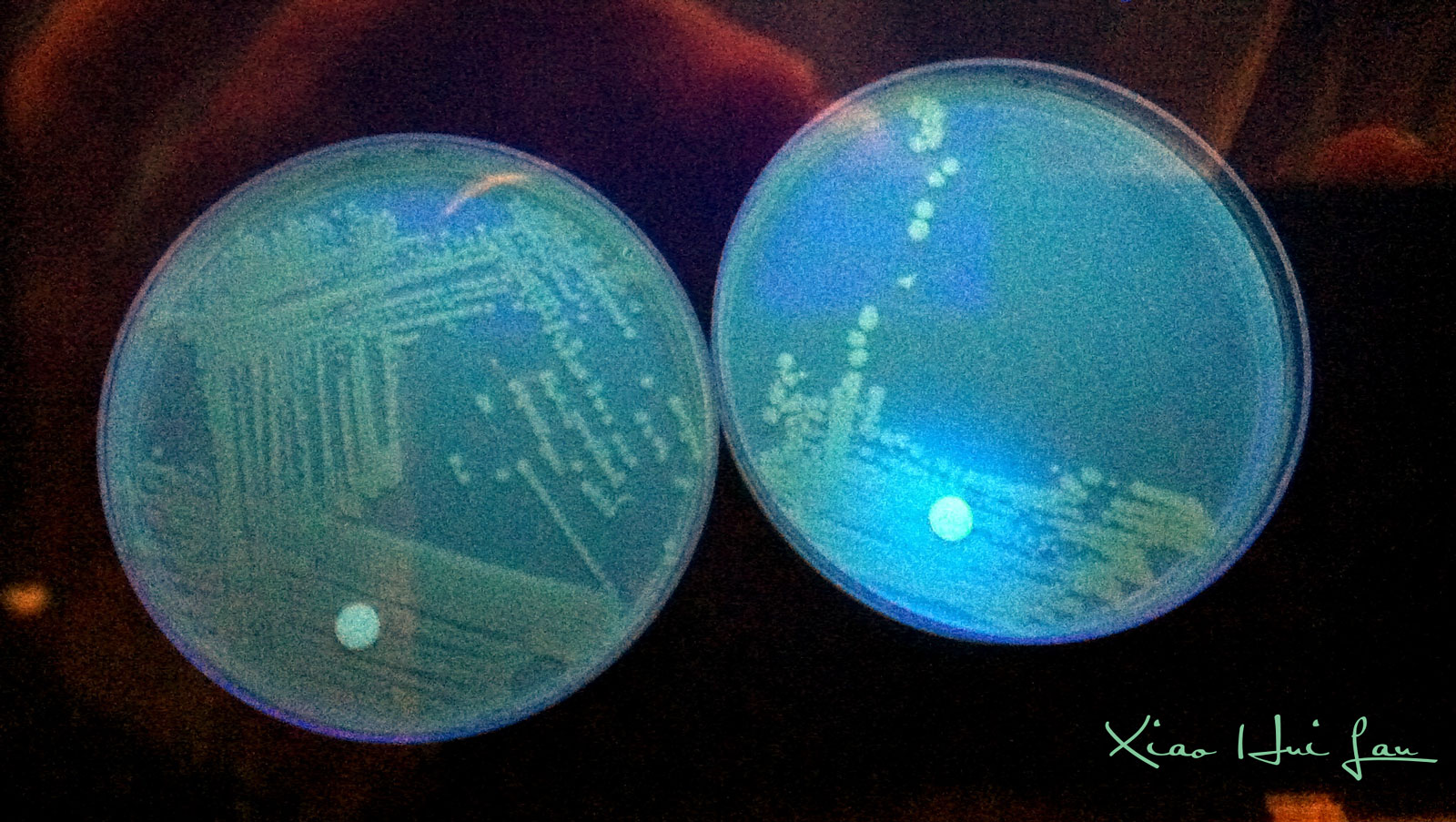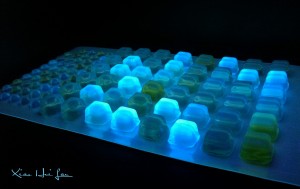I absolutely love this property of E. coli. It’s the MUG (beta-Glucuronidase) test for the rapid detection of Escherichia coli, and this is used in food, water, and environmental testing extensively. MUG is the acronym for 4-methylumbelliferyl-beta-D-glucuronide, and I’m so glad we have that acronym… The substrate 4-methylumbelliferyl-beta-D-glucuronide is hydrolyzed by the enzyme (beta-D-glucuronidase) to yield the 4-methylumbelliferyl moiety which when put under long wavelength ultraviolet light, fluoresces a gorgeous blue.
In the featured photograph up top, we have the MUG substrate impregnated in a disc that we put onto the media. On the left E. coli O157, which is actually MUG negative, and does not end up producing this fluorescence. On the right, we have a garden variety E. coli which happily gives us the pretty blue light. I seriously could stare at this all day!
Here, we have the same sort of biochemical property being used for a water test.
Next time you watch Avatar, think of the MUG shot you’ve seen of E. coli!

